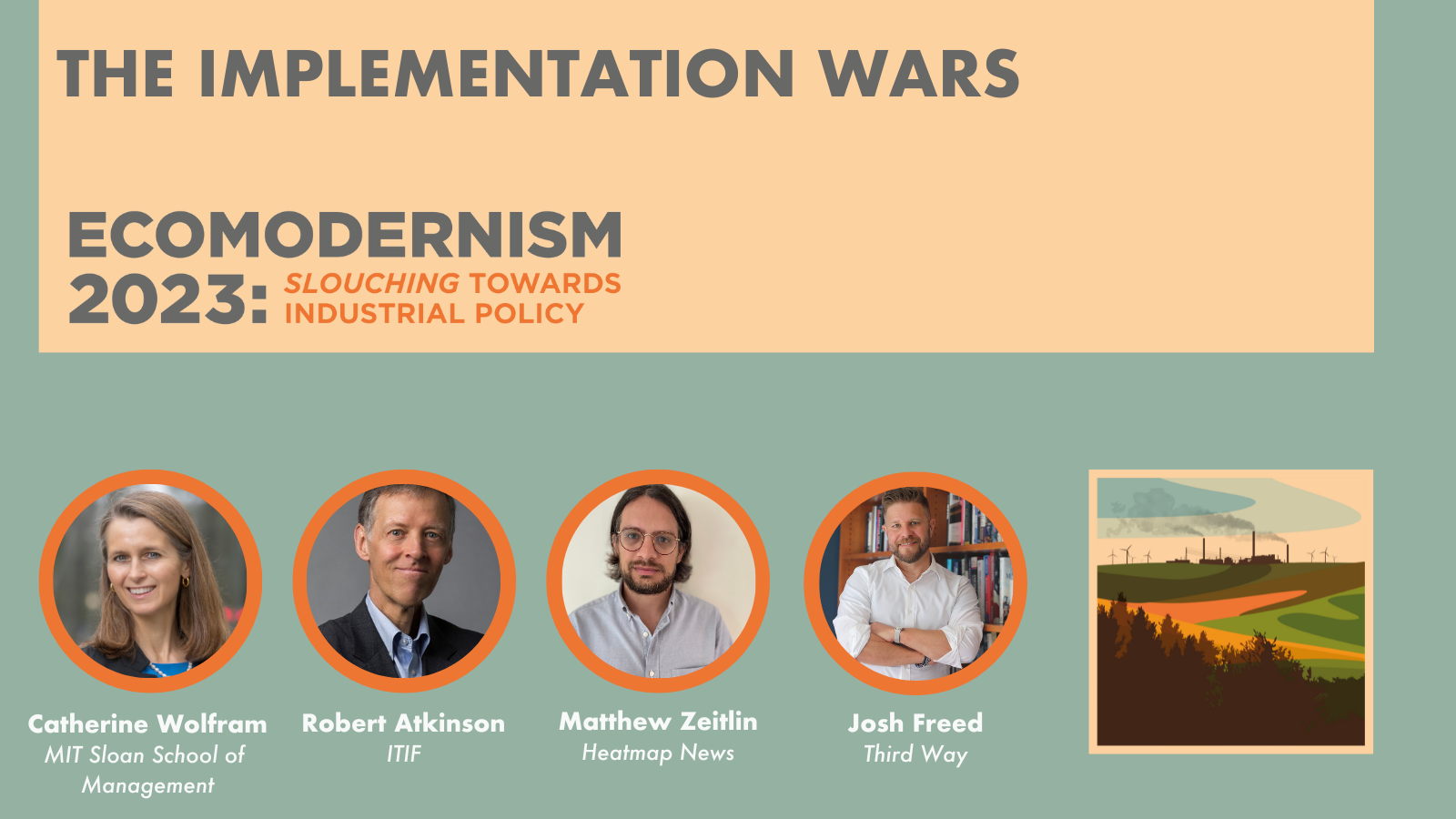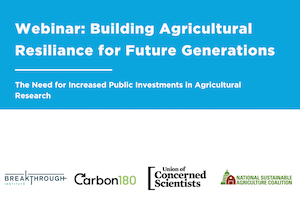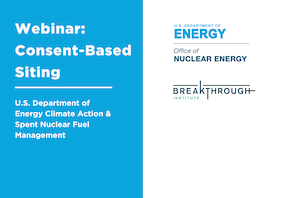Ecomodernism 2023: Slouching Towards Industrial Policy
Ecomodernism 2023: Slouching Towards Industrial Policy

Progressive climate advocates entered the first two years of the Biden Administration with glints of advance market commitments and technology hubs in their eyes and ended them proclaiming that a bold new era of green industrial policy had commenced. But beyond an undeniable quantitative increase in the scale of federal clean technology spending emanating from the Inflation Reduction Act and other recent post-Covid legislative initiatives, it is not entirely clear what qualitatively differentiates the current green technology regime from past federal programs and policies.
Tax credits and public-private partnerships remain the coin of the realm. IRA largely uses exactly the same policy levers that ARRA used a decade earlier. The CHIPS Act, like Sematech before it, proposes to leverage tariffs and investments in R&D, STEM education, technology hubs, and manufacturing tax credits to assure US supremacy in chip manufacturing.
One difference is the Biden Administration’s intention to leverage a “whole-of-government” approach to implementing IRA, pairing federal investment with executive action and ambitious utilization of established federal regulatory powers under the Clean Air Act to drive rapid decarbonization of the US economy. But the Administration and its allies also appear determined to drive the energy transition forward with one foot on the gas pedal and one foot on the brake, pumping hundreds of billions into clean technology and infrastructure and regulating fossil fuel emissions while also maintaining baroque regulatory apparatus through NEPA, the Jones Act, the Endangered Species Act, and the Nuclear Regulatory Commission that substantially constrain the pace and scale at which the new energy economy can be built.
All of which begs the question of what anyone actually means when they tout (or demean) industrial policy. Central planning or innovation policy? Market-based or state-led? The United States has a long history of building infrastructure - canals, dams, railways, and highways - in the national interest. And its entrepreneurs and industries, often supported by public investments in education, research, and commercialization, have been an engine of innovation for over two centuries.
But the current administration proposes to go further than this, pairing similar investment in clean technology and infrastructure with far reaching regulations predicated upon the rapid deployment of clean technology across the US economy, functionally transforming public innovation investments into government mandated production targets. The United States has little history with industrial policy of this sort and the track record of similar efforts elsewhere has been, to put it generously, mixed.
Appropriating hundreds of billions of dollars through a one-off party-line budget reconciliation vote turns out to have been the easy part. Sustaining a coherent national clean technology program over multiple decades, in the face of conservative eco-skepticism and environmental proceduralism and techno-skepticism, will likely prove far harder.
How, then, should advocates approach IRA implementation? What are the political, economic, and technological risks associated with maximalist industrial policy? What might be gleaned from the successes and failures of industrial policies past? And how might green industrial policies survive the inevitable shifts in political fortune at the federal level that any program to deeply decarbonize the US economy will need to weather?
Plenary

To some extent, the shift from a regulatory framework towards a technology-focused approach to climate policy was destined to reopen old semantic debates over the definition, purpose, and nature of industrial policy. And here we are. Both the American Left and Right have embraced forms of public investment in industry and trade protectionism in recent years, with many internecine philosophical and practical disputes contained within that embrace. But it is the current Administration, under the banner of “Bidenomics” and new public policy tools provided by the IIJA, IRA, and the CHIPS and Science Act, that is actively pursuing a “new green industrial policy.” The passage of these significant pieces of legislation is one indicator of a genuine new federal policy posture towards climate change, infrastructure investment, and much else. But whether that posture amounts to a hard break with the so-called “neoliberal era” that preceded it, and what industrial policy looks like when the public interest movement wields far more power than it used to, remain to be seen.
Plenary

Its champions have described the Inflation Reduction Act as the federal government, finally, dedicating its full financial might to the climate crisis. If the energy systems modelers and economists who have studied the law are in the ballpark, multiple trillions of dollars are on the table. And, barring any (not inconceivable) legislative rollbacks, the tax credits and other policies that make up the IRA will likely benefit American industries for decades to come. Yet the political consensus underwriting IRA might be shakier than is commonly assumed. A relatively unknown law, passed on a party-line Reconciliation vote, hardly feels like a third rail that Republicans, and perhaps even some Democrats, would be unwilling to touch. And many obstacles and pitfalls remain, from supply-side bottlenecks to uncertain consumer response to new financial incentives to unrequited permitting reforms that the law’s backers are counting on to maximize its efficacy. Despite significant alignment among forecasters and modelers on the law’s long-term impact, it seems plausible that more of the IRA’s aggregate outcome will be determined in its implementation than in its passage.
Plenary

If the 20th century response to environmental problems was to slow or ban industrial development, the 21st century response will be the reverse. Climate-smart agriculture, the transitions to clean energy, and even responsible forest management will require deployment of large-scale industrial technology and enterprise. And these enterprises will often take root in rural and remote places, often against the wishes of local and national environmentalist organizations and, indeed, the wishes of some local community members. This panel will consider the landscape and local political implications of national industrial environmental policy, and the ways in which reimagined agricultural, energy, and forest policy could cohere to create a new kind of environmentalism for the 21st century.
Plenary

While most climate discussions acknowledge some need for new mining as solar farms, battery electric vehicles, and hydrogen electrolyzers proliferate, views differ over how U.S. policymakers should balance tradeoffs. What does fair distribution of economic benefits from new mine projects between labor, local communities, and industry look like? Can policies both promote rapid expansion of domestic mineral production while upholding strong social and environmental protections? Would efforts to reduce car dependence or energy demand meaningfully minimize future mineral requirements? To genuinely drive social change and accelerate mineral production, normative conversations about the optimal quantity of and approaches to mining must increasingly transition towards actionable policy proposals that can deliver upon such aspirations. Global supply chain security and supply chain responsibility challenges, in turn, raise broader questions about how America can best coordinate with international partners and support the worldwide energy transition.
Other Programming

Evening Programming

























